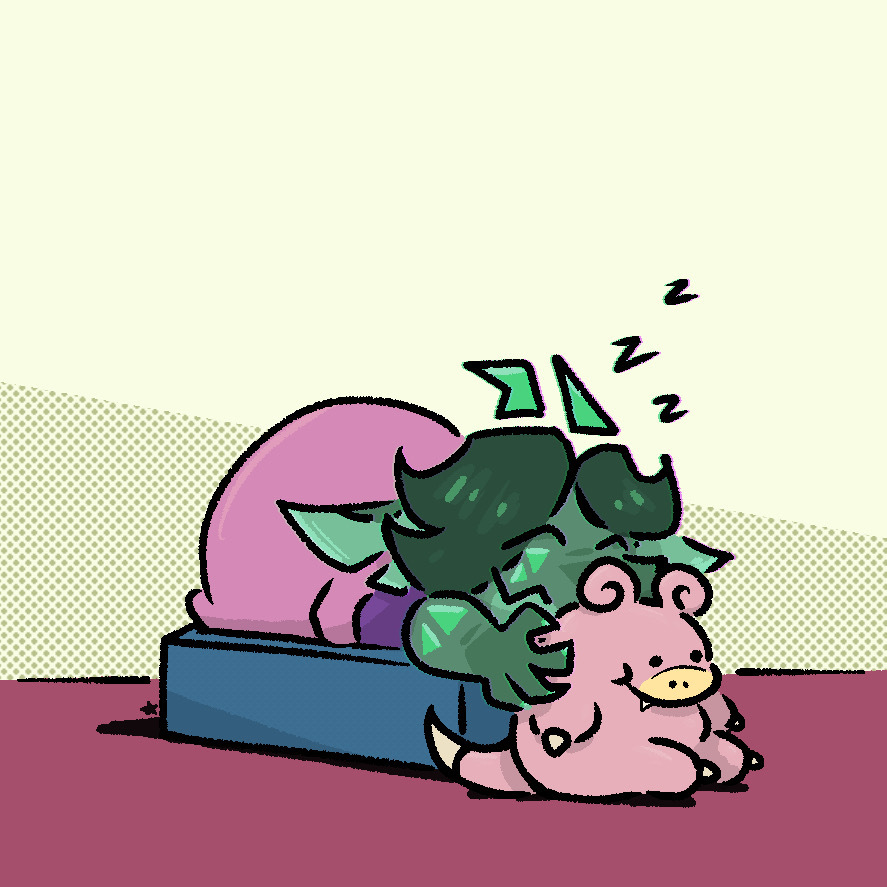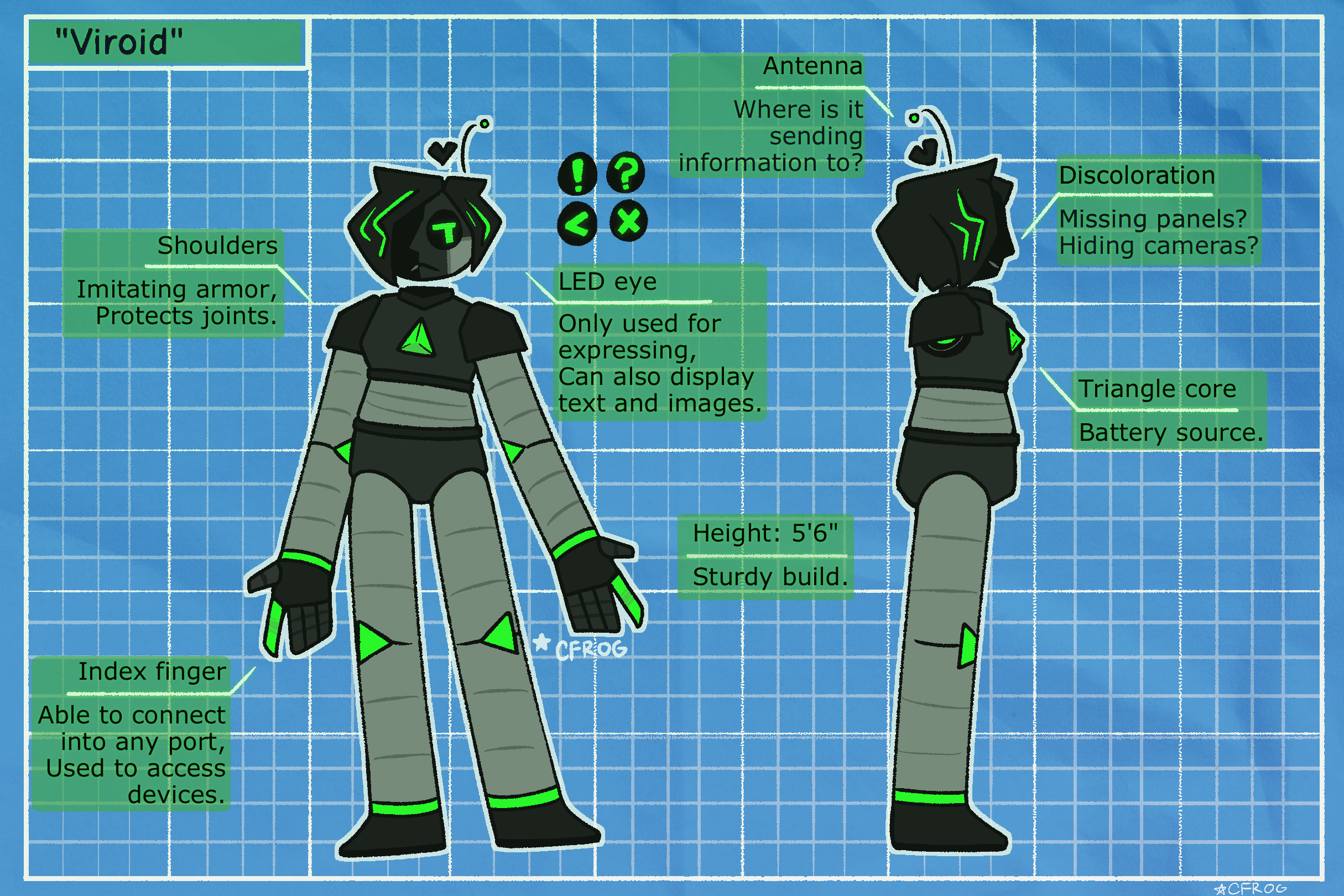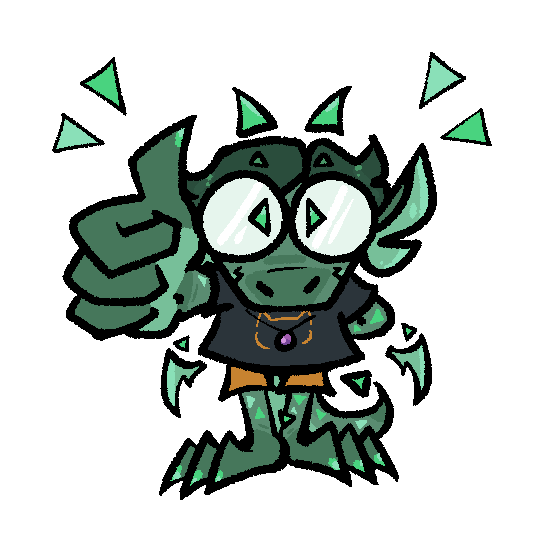Robot Models

This page is a work in progress. Check back later for more info.
[insert company name here] | |
|---|---|

| |
robot clipart | |
The robotics company featured in My Robots ♡ produces multiple models of robots, each designed around a different job. This article is for compiling information on all of the known models and their functions. I've written this like an "in-universe" wiki page, excluding the trivia section.
Table of Contents
Basic Model
This section is for describing standard features that all models come equipped with.
Standard models are humanoid in shape, with two arms and two legs. The body has two main sections, the chest and the pelvis, connected by a flexible middle section to allow for bending. Most of the actual computing parts are stored in the chest, with the head reserved for storing the cameras, microphones, and speakers (eyes, ears, and mouth).
All robots are powered by an energy core stored within their chest. Bots will typically charge for a few hours per day, though in case of emergency, a core can continue supplying power for up to 60 hours. The "window" set into the chest allows the core's status to be checked at a glance. The core fluid color is purely aesthetic. Most models cycle through colors as produced (e.g., 01 is blue, 02 is green). Colors can be useful for differntiating bots if multiples of the same model are being used in a work area.
Xiphoid

Model ID "Xi00", intended for robot repairs and maintenance, as a replacement for human engineers.
The Xiphoid model's most distinctive feature is its "hair", which consists of 7 additional limbs refered to as "strands". These limbs are made up of metal segments, similar to the basic limb design, with a soft rubber coating to allow for better grip. Each strand has a minimum length of 3ft and a maximum of 10ft, able to extend and retract. While they lack the precision of hands, the strands do have more reach and strength, and are able to hold and retrieve items while a Xiphoid’s hands are busy. For added efficiency, the strands collectively run on a separate processor than the rest of the bot’s functions. This prevents the numerous extra limbs from slowing down the model’s processing. While a Xiphoid may seem to have control over its hair, they actually run on their own basic AI and respond to commands made by the central AI. Again, this helps with efficiency and multitasking.
The Xiphoid has high quality cameras, resembling professional digital cameras, to give the bot the best view of their work area possible. The cameras have an aperture and shutters, which also allow for a wide range of expressions. The small moving parts are highly susceptible to damage from particulates and need to be cleaned regularly.
The Xiphoid was originally advertised with the main selling point of a new, more advanced artifical learning program. It was applauded as a robot that could learn faster than a human and do repairs twice as well. The program also allowed for more human-like personality and an ability to socialize better than previous models, making it perfect for working alongside human engineers. While these are true about the model, the advertisements were quickly dropped after the model was officially implemented. Production of new Xiphoids was discontinued only a few months after, making it a very rare model. All Xiphoids in use are kept in secure locations within the company's buildings and are no longer seen by the public.
Nautiloid

Model ID "Naut0000", intended for deep-sea research, older model.
Viroid

The Viroid model is not an offical model and does not belong to this robotics company.
Other Models
Arachnoid
Model ID "Ara000", intended for textile production, working alongside heavy machinery. It has 4 arms total. This older model is known to need frequent repairs.
Hematoid
Model ID "Hema000", intended for basic medical assistance, to work alongside human nurses. It's able to wirelessly connect to monitoring equipment and display a patient's vitals and other information. It can also take blood samples.
Nucleoid
Model ID "Nuc000", intended for monitoring and maintaining the power plants. These models are well-liked by other bots due to the power plants' importance, keeping them all charged.
Toxoid
Model ID "Tox0000", intended to be sent into areas unsafe for humans to remove and destory dangerous materials. Maintenance on these bots requires special quarantine proceedures. Even if the robots themselves can't get "sick", contaminates can still be spread and put humans at risk.
Trivia
All model names end in "-oid", a Latin suffix meaning "resembling" or "like". This is a reference to robots commonly being refered to as "androids", which means "man-like".↗ While the term isn't necessarily gendered, I decided to avoid using it to discourage gendering the robots.
All of the model names are real words, and their names typically relate to their jobs. Here is a full list of words ending in "-oid" which I consult for definitions.↗ Use it to make up your own models if you want.
